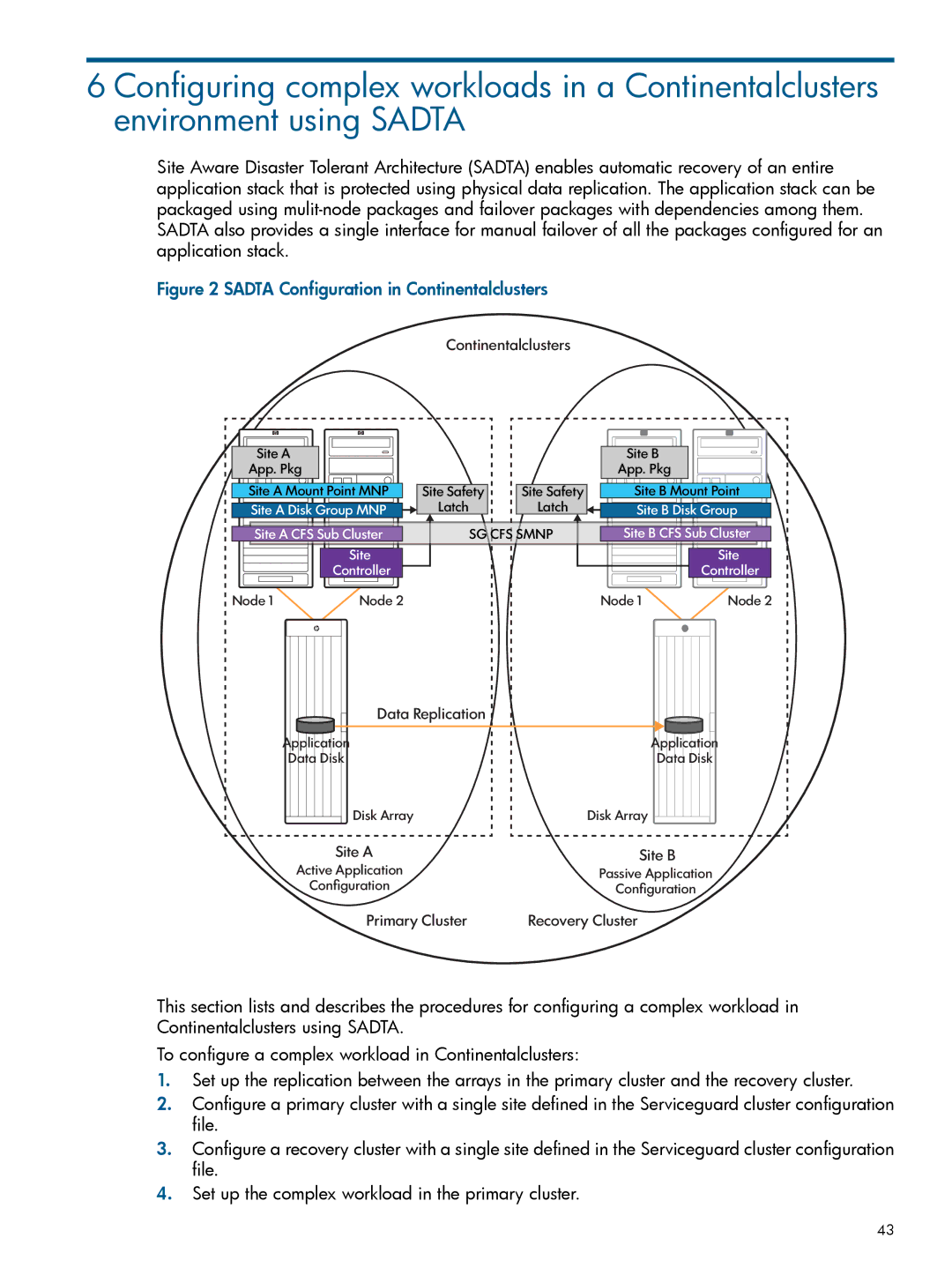
6 Configuring complex workloads in a Continentalclusters environment using SADTA
Site Aware Disaster Tolerant Architecture (SADTA) enables automatic recovery of an entire application stack that is protected using physical data replication. The application stack can be packaged using
Figure 2 SADTA Configuration in Continentalclusters
Continentalclusters
Site A |
|
|
| Site B |
|
App. Pkg |
|
|
| App. Pkg |
|
Site A Mount Point MNP | Site Safety | Site Safety | Site B Mount Point | ||
Site A Disk Group MNP | Latch | Latch | Site B Disk Group | ||
Site A CFS Sub Cluster | SG CFS SMNP | Site B CFS Sub Cluster | |||
| Site |
|
|
| Site |
| Controller |
|
|
| Controller |
Node 1 | Node 2 |
|
| Node 1 | Node 2 |
Data Replication |
|
Application | Application |
Data Disk | Data Disk |
Disk Array | Disk Array |
Site A | Site B |
Active Application | Passive Application |
Configuration | Configuration |
Primary Cluster | Recovery Cluster |
This section lists and describes the procedures for configuring a complex workload in Continentalclusters using SADTA.
To configure a complex workload in Continentalclusters:
1.Set up the replication between the arrays in the primary cluster and the recovery cluster.
2.Configure a primary cluster with a single site defined in the Serviceguard cluster configuration file.
3.Configure a recovery cluster with a single site defined in the Serviceguard cluster configuration file.
4.Set up the complex workload in the primary cluster.
43
